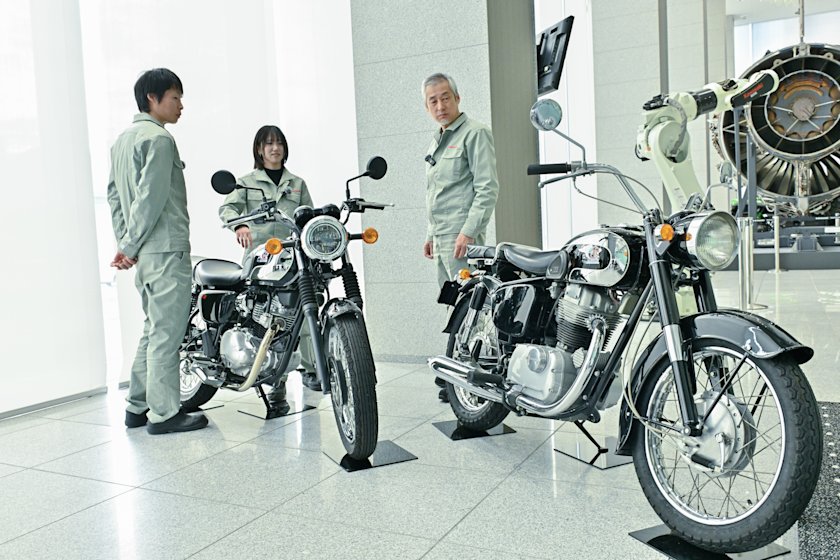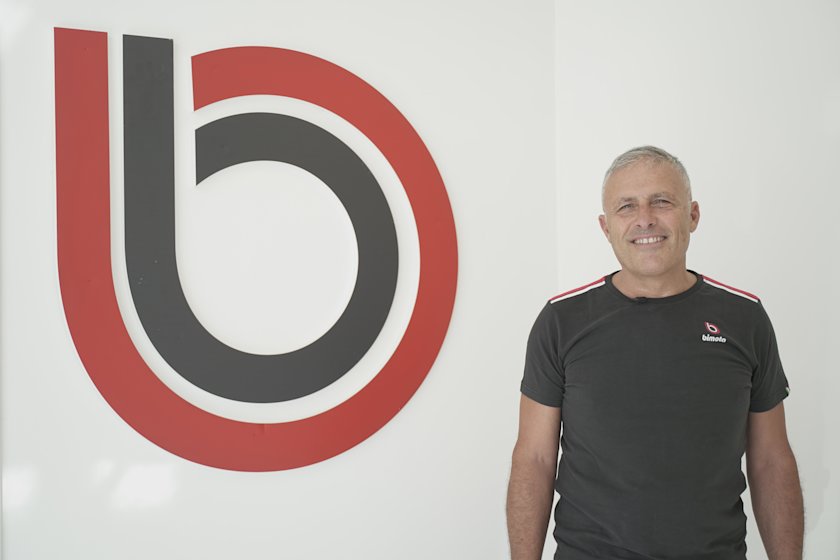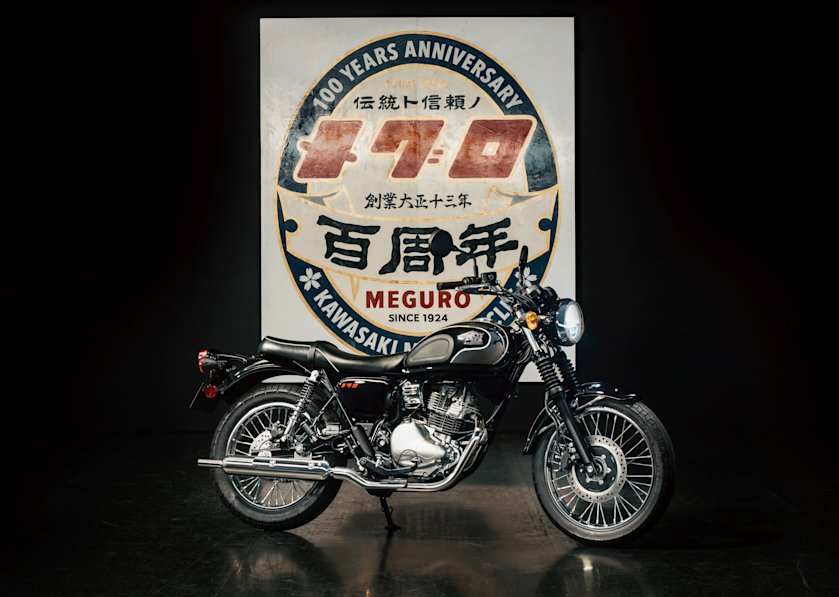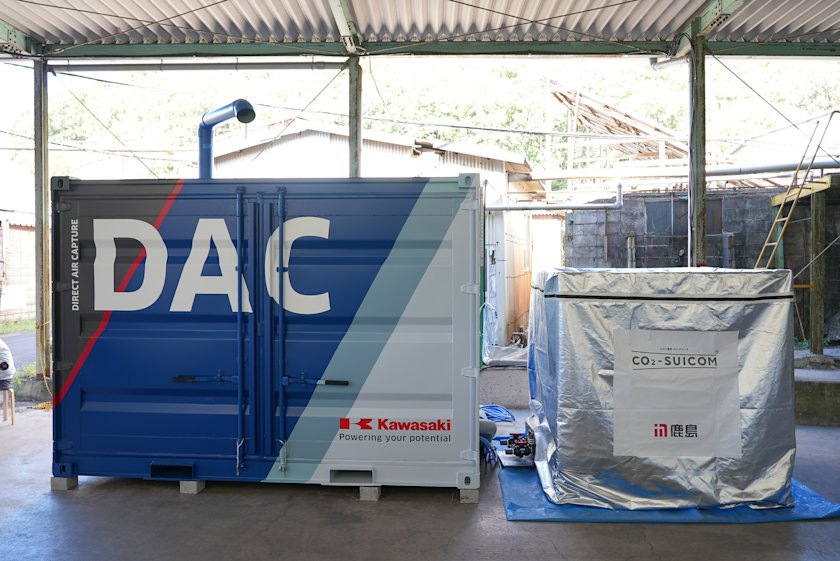HySE-X1 / Engineers Contest the Dakar Rally 2024 with a Hydrogen Engine

The HySE-X1 hydrogen-powered buggy developed by HySE, a hydrogen small mobility and engine technology research association in which Kawasaki Motors and Kawasaki Heavy Industries are involved, participated in the Dakar Rally held in Saudi Arabia in January 2024. Despite it being its first attempt at the Dakar, it managed to make it to the final stage. The engine at its heart is a hydrogen-fueled engine based on the supercharged engine used in Kawasaki Motors’ Ninja H2 series.
The HySE-X1 was developed over a short period of time. It came together about six months after the establishment of HySE itself, and just three months after HySE announced that its entry in the race. The following are interviews with three Kawasaki project members, speaking about their participation in the Dakar Rally and the story behind the HySE-X1 engine.

As well as spearheading new business at Kawasaki Heavy Industries, Yoshimoto Matsuda is responsible for Kawasaki Motors' hydrogen strategy and serves as Vice Chaieman of HySE.
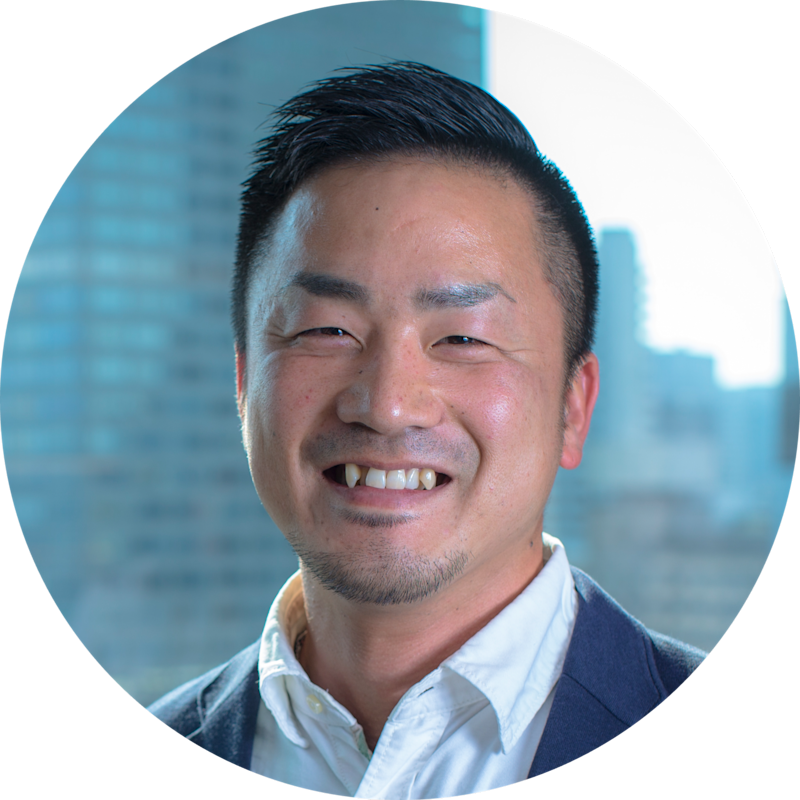
Koyo Fujiwara works in Testing Department 1 at Kawasaki Motors. He is in charge of engine development and testing for both production and advanced/future vehicles. He also does engine development and testing for HySE and participated in the Dakar Rally as an engine mechanic.

Working in the Advanced Development Department at Kawasaki Motors, Mishio Omori designs and develops hydrogen engines. For HySE, she is researching the hydrogen engine based on the Ninja H2’s supercharged engine.
Much about hydrogen engines remains unknown
HySE went to the Dakar Rally to dig deeper into how they work


Shortly before the launch of HySE, there was a test of a hydrogen engine that was being developed independently by Kawasaki Motors. I went to visit the test, and over dinner with the development team suggested, “Let’s go to Dakar!” Everyone was excited and said, “Let’s go!” but we really did go to the Dakar Rally! *laughs*

Yes, I remember that well. I said, “Let’s go!” too, but I never thought it would happen.
How did you decide to join Mission 1000 in the first place?

In June 2023, I visited the Amaury Sport Organisation (A.S.O.) in Paris—the A.S.O. is the organizer of the Dakar Rally—to explain HySE and our activities. When I was there, I found out that the A.S.O. was impressed by what HySE was doing, and they also told me that they would cooperate with us should we wish to enter the Mission 1000 category being formed for 2024.
After that, I headed to Belgium to visit Overdrive Racing, who partners with Toyota Motor Corporation (Toyota) for the Dakar Rally. Toyota is a special member of HySE along with Kawasaki Heavy Industries. Earlier in my career, I was in charge of development for Kawasaki’s MotoGP and supersport models, so when they showed me their factory during our discussion about plans for the rally, I liked what I saw and was confident that this would work. I then came back to Japan and made a solid plan for us to enter the Mission 1000 category in the Dakar Rally. I was excited to make the announcement to everyone in HySE: "Let's go to Dakar!"

For the HySE-X1, we built a hydrogen engine based on the Ninja H2 series engine and tested it at the end of September. The engine was sent to Overdrive Racing to be mounted in a specially made chassis, after which the first test run happened in mid-November. The engine itself performed well. However, for the powertrain we were using a chain final drive like a motorcycle, and the chain couldn’t handle the weight of the buggy so would break every 500 meters. Not being able to run properly was an unexpected problem; we concluded that the only way to solve it was to use a gear drive.

I couldn’t participate in the field test, but I was keeping track of the test status in my daily reports. For the chain issue, I’d already started to consider solutions to offer from the Japan side, and I remember being so relieved when word from the field arrived suggesting the use of a gear drive.

However, the drive gear took a long time to complete, and the first test we could do with it was actually on-site just before the start of the Dakar Rally 2024. I was very nervous, but I’m glad it went well in the end.


I can definitely say that it was quite difficult to adapt Kawasaki Motors’ advanced hydrogen engine for the HySE-X1.

Kawasaki Motors had developed its own hydrogen engine for motorcycles and other applications and had already conducted various tests with that. But for HySE’s entry in Mission 1000, we needed to make an engine ECU*1.
For the ECU tuning, we used Yamaha Motor's engine bench testing facility*2. I was nervous about that too, because I’d never used another manufacturer's development facility before, but I was looking forward to it.

Also, it was very difficult to get the injectors (electronic fuel injection system) working in a hydrogen engine. Because hydrogen is stored at high pressure, to fill the cylinders for it to be used as fuel, that high pressure must be maintained when spraying it from the injectors. The system to achieve this is complex and requires high voltage, which consumes a lot of electricity.

This hydrogen engine uses a system of direct injection, in which fuel is sprayed directly into the combustion chamber via injectors. Although we understood the difference in combustion between gasoline and gaseous hydrogen from an analytical standpoint, we were surprised to find that the combustion characteristics of hydrogen were so different from gasoline that the experience and knowledge we’d gathered over the years with gasoline engines was basically useless. That’s why from the testing stage, we had abnormal combustion fairly frequently and we couldn’t rev the engine to a high rpm. In normal development, figuring out those unknowns is the fun part of the process is, but in this case we didn’t have enough leeway to take our time and enjoy the process.

If we detected abnormal combustion, we would change the fuel injection timing, ignition timing, or ECU data, to try to make improvements at various engine speeds and throttle openings. We repeated that process with the goal of putting together a package that could perform in the Dakar Rally.
*1 Abbreviation for Engine Control Unit, a device responsible for electronic control of the engine.
*2 Test equipment for evaluating and verifying the performance of the engine alone.
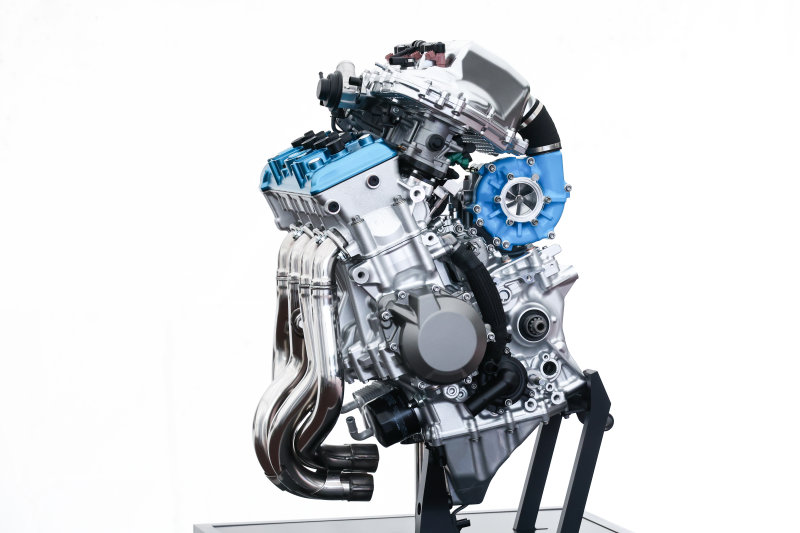
The unexpected—both good and bad—happens
That is the reason for participating in the Dakar Rally
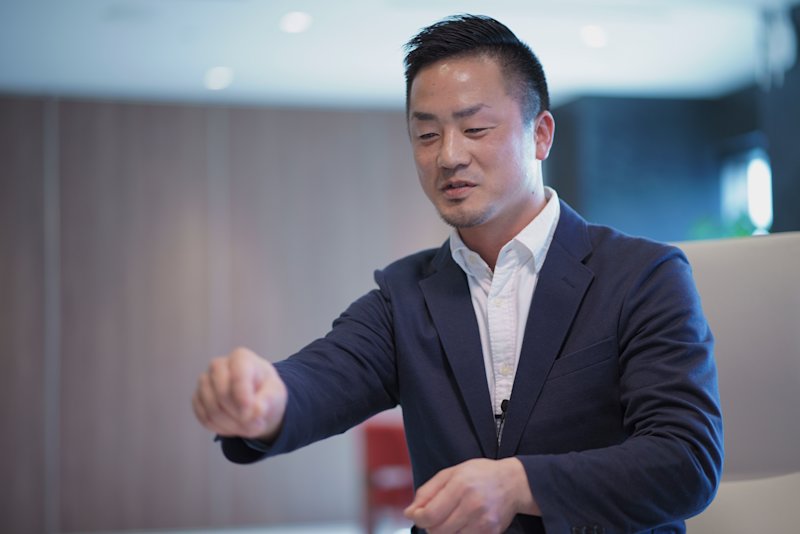

During the engine bench tests before heading to Saudi Arabia, we established a setting that would prevent abnormal combustion, but when the Mission 1000 began and the car actually drove on the course, we got abnormal combustion. Not only that, but the combustion became unstable, among other unpredicted things that started to happen.

The original objective of going to the Dakar Rally was research. We already had knowledge in how to develop gasoline engines, and based on that, we decided what to research for hydrogen engines. However, when you run a research vehicle with a hydrogen engine in a harsh environment, it’s natural that unexpected problems occur. Getting ahead of those unexpected problems was a major purpose of our participation in Mission 1000.

One major challenge was the daily mileage we had to cover. On paper, it was not feasible.

The Mission 1000 challenge consists of a series of courses of about 100 km per day set by the organizers, covering a total of 1,000 km over a period of 10 days. The issue was that we were not sure if the HySE-X1 would be able to complete 100 km in a single run; our calculated range was only about 50 km. So, after consulting with the organizers, we planned to transport the car to a point 40-50 km away from each day’s goal, then start from there and attempt to complete each course that way.

Funnily enough, once the HySE-X1 got going, it was actually able to complete 100 km per day. We still aren’t sure why it was able to do this. We plan to analyze the engine data to figure out why the cruising distance was longer than what we calculated beforehand.

When those kinds of unexpected things happen, good or bad, it makes us wonder why, and that’s where real development starts.

A specially designed engine for even more power
The engineers' ambitions grow
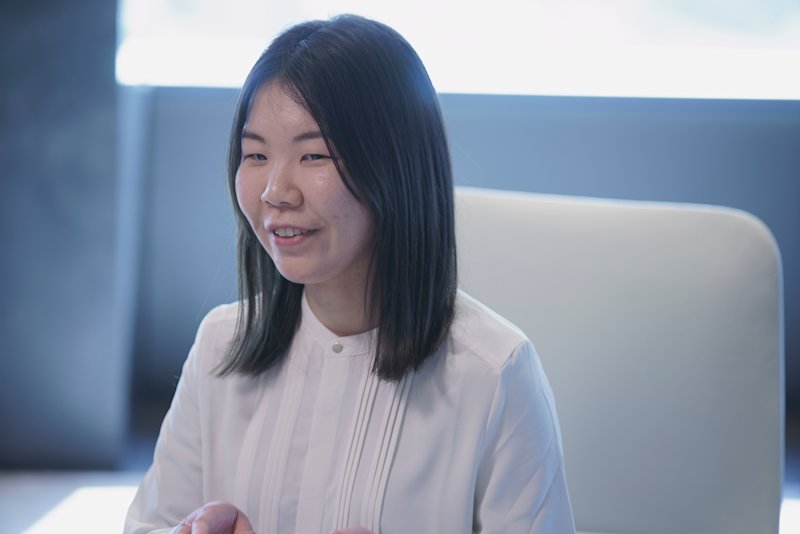

Since we had limited time to work on the HySE-X1, we had to make do with existing technology and parts to get it done in time. What I think though, is that if we start preparing now for our next project, we might be able to improve the engine's output characteristics by changing some of the hardware, which would give us a wider range to work with.

For us, the idea was that if the engine broke down in the Dakar Rally, then it was worth it for us to participate. This year though, we were able to complete the race without any major problems. So, if we can participate again next time, I’d like to build an engine with even more aggressive specifications and run that in a range where our calculations suggest it would break down. Doing that would give us a better idea of the potential of hydrogen engines.

If everything is running smoothly, development does not progress. Every engineer, including myself, has to be a little bit unreasonable and reckless in order to make progress. When people around us say that something is impossible, that means we’re doing our jobs exactly right.
At present, HySE is an association made up of only Japanese manufacturers, but carbon neutrality is an issue that needs to be tackled worldwide. That’s why I think it’s important that we find partners around the world, and I think those partners need to be good ones. With good partners, research will move forward rapidly. That’s HySE’s mission, and it’s why we’re participating in the Dakar Rally. In fact, we’ve already had several companies outside Japan approach us about participating in HySE. Things are going just how we’d hoped they would.


Participating in the Dakar Rally is a really hard thing to do, and that’s why I want the team to push themselves hard (in a good way!). If we were doing something easy, it would be meaningless. Without breakthroughs, research can’t move forward. Those breakthroughs revolve around a lot of human feelings, like joy, anger, sorrow, and humor. I want developers to be moved by the work they do, and if you look closely at what moves them, it’s the emotions behind it all.

We only started working on hydrogen engines two years ago, and we were already able to complete 100 km stages at the Dakar Rally, so honestly I’ve been amazed at how fast development has evolved and progressed. At the same time, I am also aware of the evolution of the hydrogen engine itself, which I believe is only going to progress faster as HySE grows. I get the feeling that hydrogen engines will indeed have practical, useful applications.

So, for the next Dakar Rally, let's propose 1.5 times more power with the same fuel consumption to the HySE team.

Hmm, I'll see what I can do to make it happen! *laughs*




